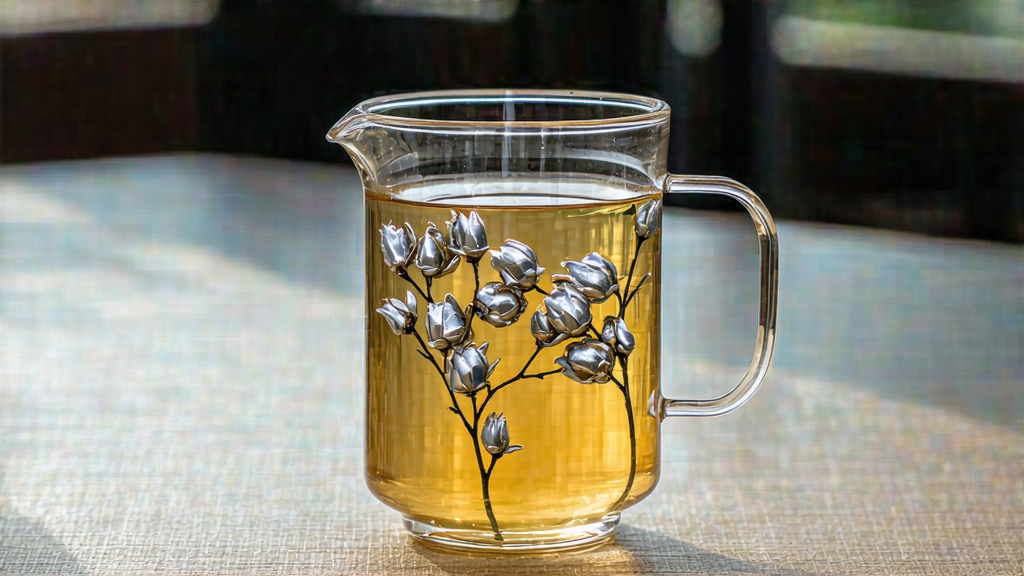
If green tea is the exuberant youth of Chinese tea and pu-erh its contemplative elder, white tea is the moonlit poet who arrives late to the banquet, speaks softly, and is remembered longest. Among the six major families of Chinese tea, white tea alone is defined less by the firing of leaf and more by the patience of time and air. Nowhere is this philosophy distilled more purely than in Fuding Silver Needle, the most aristocratic of all white teas, a beverage that begins as a single plump bud on a misty March morning and ends as liquid starlight in a porcelain cup.
A Brief Geography of Silence
Fuding county hugs the northeastern coast of Fujian province where the Wuyi Mountains surrender to the East China Sea. Here, the Taimu mountain range traps maritime clouds that silver the tea gardens three hundred days a year. The soil is flinty red granite, porous and faintly acidic; drainage is so swift that roots must dive deep for minerals, concentrating amino acids in every bud. Locals joke that the same salt-laden breeze that rustles the thatched roofs also salts the tea, giving Silver Needle its subtle marine sweetness. Within Fuding, the villages of Guan Yang, Dian Tou, and Pan Xi have been demarcated as core-origin zones; buds picked outside this 600-square-kilometer radius may mimic the shape but never the scent of sea orchid and sugarcane that defines true Silver Needle.
From Imperial Tribute to Cold-War Relic
Written references first appear in the 1796 edition of the Fuding County Gazetteer, describing “white-down buds, offered to the court in small red silk pouches.” By the late Qing, Silver Needle had become so coveted that magistrates weighed it against silver for tax payments. When the last emperor abdicated in 1912, the tea gardens were abandoned to weeds; only in 1963 did a state-owned corporation revive production, secretly exporting the entire crop to Poland as barter for railway steel. Thus, for two decades the only Europeans who tasted Silver Needle were Polish bureaucrats who brewed it in enameled pots, wondering why their tea tasted of “cucumber and melon.” When Deng Xiaoping opened China in 1978, German tea merchant Erwin Hübel carried the first commercial kilo to Hamburg, pricing it higher than Darjeeling’s finest muscatel. The West finally noticed the needle.
The Plucking Code: One Bud, No Leaf, No Mercy
Silver Needle is harvested only during a five-day window in late March when the average diurnal temperature hovers between 12 °C and 18 °C. At dawn, sixty thousand buds must be gathered to yield a single kilo of finished tea. Pickers—usually women between forty and sixty years old—use thumbnail and middle finger to snap the bud without squeezing the sap; any pressure bruises the needle and oxidizes the tip into an unsightly brown “broom head.” Baskets are woven from thin bamboo strips wide enough to allow air circulation; plastic is forbidden because it encourages anaerobic fermentation. Once every hour the buds are carried to the withering loft, never allowing the sun to climb higher than thirty degrees above the horizon. The rule of thumb is colder air, sweeter tea.
Withering: The Art of Doing Nothing
Unlike green tea that is pan-fired to arrest enzymes, Silver Needle is coaxed into revealing itself through a 48-hour slow dance with moisture and wind. Traditional withering rooms are second-story lofts whose windows face north to avoid direct sun. Buds are laid two centimeters deep on bamboo trays stacked like drawers in a Victorian apothecary. Below, a charcoal brazier smolders without flame; above, ceiling fans turn at the speed of a resting heartbeat. Master witherers judge readiness not by clock but by sound: when a handful of buds shaken gently emit the soft rustle of dry beans, the first phase is complete. Moisture has fallen from 75 % to 30 %, yet the bud remains pliable, its surface frosted with tiny “down hairs” that refract light like powdered diamond.
The Optional Pine Smoke: A Controversial Kiss
Purists insist Silver Needle should never meet smoke, but in the mountain hamlet of Guan Yang a handful of producers still cold-smoke the trays for twenty minutes using local Masson pine. The temperature stays below 35 °C, so the buds absorb only resinous aroma, not heat. The result is a whisper of campfire that lingers in the cup